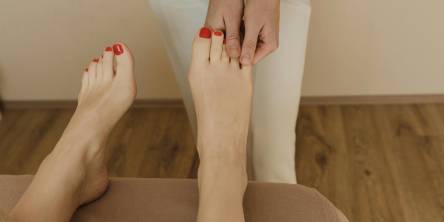8 Facts About Chronic Pain

Chronic pain is a medical problem that affects many people around the world. Unlike acute pain, which is a short-term response of the body to tissue damage, chronic pain lasts longer, often without obvious physical damage. It can last from several months to several years, and its consequences can affect all aspects of a person's life. In this article, we will look at the basic facts about chronic pain, its effects, and how to deal with it.
1. What is chronic pain?
Chronic pain is defined as pain that lasts more than 3 to 6 months, well beyond the normal healing time from an injury or illness. It can be constant or irregular, sometimes more intense, and sometimes weak but long-lasting. The causes of chronic pain can be different, from injuries and diseases to psycho-emotional factors. Chronic pain most often occurs in conditions such as arthritis, fibromyalgia, migraine, neurological disorders, and post-traumatic pain.
2. Chronic pain is not always accompanied by physical injury
One of the most important characteristics of chronic pain is that it can exist even without obvious physical injury. In some cases, the nervous system becomes overactive, leading to a sensation of pain even in the absence of tissue damage. This phenomenon is called neuropathic pain and is associated with a disruption of the normal function of the nerve pathways.
3. Psychological factors play a key role
Chronic pain can have serious consequences for a person's psycho-emotional state. Chronic pain can lead to depression, anxiety, insomnia, and reduced quality of life. Stress and emotional tension can increase the perception of pain and create a vicious circle. Therefore, the treatment of chronic pain often requires an integrated approach that includes not only drug therapy but also psychotherapeutic methods.
4. Pain is perceived individually
Each person perceives pain differently. Pain perception depends on many factors, including personal pain tolerance, emotional state, and social and cultural aspects. For example, some people with chronic pain may be less stressed, which helps them cope with the pain, while others may be more sensitive.
5. Chronic pain can limit physical activity.
One of the most obvious consequences of chronic pain is the limitation of physical activity. Constant pain can make it impossible to carry out daily tasks such as work, hobbies, or even self-care. The muscle weakness that comes with insufficient physical activity can only increase pain as the muscles become less flexible and vulnerable. This creates a vicious cycle that is difficult to escape without appropriate intervention.
6. Modern diagnostic and treatment methods
Diagnosing chronic pain is a complex process that involves not only a physical examination but also an analysis of the patient's psycho-emotional state. Doctors may use a variety of techniques, including MRIs, CT scans, X-rays, and pain sensitivity tests, to understand the nature of your pain.
Treatment for chronic pain is typically individualized and includes medications (painkillers, antidepressants, anticonvulsants), physical therapy, psychotherapy, and alternative modalities such as acupuncture or massage. If you search for "chronic pain management doctors near me," be sure to choose experienced and qualified specialists.
7. The role of pharmacotherapy in treating chronic pain
Various medications can be used to treat chronic pain. The most common of these are painkillers such as NSAIDs (nonsteroidal anti-inflammatory drugs), analgesics, opioids, antidepressants, and anticonvulsants, which help relieve pain, especially neuropathic pain. However, it is important to remember that long-term use of painkillers can have side effects and lead to addiction.
8. Chronic pain conditions can affect the quality of life
Chronic pain affects all aspects of a patient's life. It can interfere with social life, work, and even simple pleasures such as walking or traveling. Doctors and rehabilitation specialists emphasize the importance of a multifaceted treatment approach that combines medical therapy, psychotherapy, and maintaining an active lifestyle to minimize the effects of chronic pain.
Similar Articles
Knee pain affects millions of people around the world. It can make daily activities difficult and impact your quality of life. Knee discomfort can be caused by injuries, chronic conditions, or overuse.
If your knees have recently started sounding like a bowl of Rice Krispies (snap, crackle, pop!) every time you stand up, congratulations — you're officially living the adult experience.
Search engine optimization (SEO) may help physical therapists improve their online exposure and drive more visitors to their website.
You're sitting at home with two completely different treatment plans from two doctors you trust.
When conservative therapy fails, surgery may be required to alleviate chronic foot or ankle discomfort.
Your body changes with time - muscles and bones shift, ligaments loosen, and circulation may slow. Unfortunately, the aging process has an impact on our feet as well.
Back problems aren't just discomfort or temporary back pain. Many of them can be extremely dangerous and lead to serious complications if you don't seek medical attention on time.
Sciatica is a condition in which the sciatic nerve, the longest nerve in the human body, becomes irritated or pinched
Irritable bowel syndrome (IBS) is a dysfunction of the gastrointestinal tract that manifests as abdominal pain, bloating, flatulence, and intestinal discomfort (constipation, diarrhea, or a combination of both.









